Prescription medications are any drug regulated by law that require a doctor’s prescription before it can be obtained.
Understanding Prescription Drug Abuse
Learn More About Prescription Drug Addiction
The danger with prescription drugs is that many people believe that since they are obtained from a doctor, they can’t become addicted and the medication won’t cause serious harm. Prescription medication abuse is when a substance is used in a way that was not initially intended. Prescription addiction can develop in a few different ways. Some individuals use these medications to get pleasurable sensations, while others may have been taking a medication for legitimate conditions and no longer believe that they can function without it.
While most individuals take their medications the way in which prescribed by a physician there are some individuals who abuse prescription medications. This has, unfortunately, deterred a number of individuals who would have otherwise sought treatment to fear medications and physicians have become afraid to prescribe prescription medication for even valid medical reasons. There are many different types of medications that are abused, but the most commonly abused are benzodiazepines, opioids, and stimulants.
Benzodiazepines such as Xanax and Ativan are some of the most highly addicted and abused prescription medications. These drugs are intended to be used for only a short amount of time to get the symptoms of anxiety under control. Unfortunately, many individuals become addicted to the way these benzos make them feel and begin to take higher doses of the medication.
Opiate narcotics are most often used to manage both acute and chronic pain. These narcotics provide users with an all-over feeling of euphoria and happiness, making them highly addictive.
Stimulant drugs such as Adderall and Ritalin have been used to manage attention-deficit hyperactivity disorder and narcolepsy. Certain individuals enjoy the sense of energy and increased self-esteem these drugs provide and begin to use them for nonmedical purposes.
Prescription drug abuse and addiction is quickly becoming an epidemic in the United States and requires treatment from rehab centers to overcome.
Statistics
Statistics of Prescription Drug Addiction
The prevalence rate for prescription drug abuse in adults in the U.S. is estimated to be over 2.7%. The most commonly abused prescription drugs are stimulants, sedatives, and opiates. Over 8% of high school seniors reported taking Vicodin while over 5% reported using Oxycodone for nonmedical purposes.
Causes
Causes and Risk Factors for Prescription Drug Abuse
As there is a wide variety of prescription medications that are abused for nonmedical purposes it is not possible to determine an exact cause for the development of an addiction problem. Research has shown that the development of addiction is likely to be caused by a number of factors working together. Some of these factors may include:
Genetic: It has been shown that individuals who have relatives with addiction problems are more likely to develop addictions themselves. It is thought that the predisposition to develop an addiction problem may be passed down through certain genes, although it is not entirely understood.
Brain Chemistry: Substance abuse disorders develop from the effects that the drugs have on the reward system of the brain. Prescription medications act like the naturally-occurring neurotransmitters in the brain, creating a false sense of well-being. After prolonged abuse we are no longer able to naturally produce those chemicals so the drug abuse continues.
Environmental: Many times individuals use prescription medications to handle the stress associated with daily life. They have turned to substance abuse because this is the only coping mechanism they know. Additionally, they may have grown up in an environment where substance abuse was an acceptable behavior and an appropriate means of handling emotional pain.
Signs
Signs and Symptoms of Prescription Drug Abuse
There are a variety of signs and symptoms that may indicate the use and abuse of prescription medication. Actual symptoms experienced will depend upon the type of medication abused. Some symptoms that are common to all abused substances include:
- Neglecting responsibilities
- Risky behaviors
- Stealing medications
- Abandon activities once enjoyed
- “Doctor shopping”
- Frequent trips to the ER with various somatic complaints
- Selling medication for money
- Mood swings
- Irritability and hostility
- Anger or angry outbursts
- Forging prescriptions
- Changes in sleep patterns
- Poor judgment
- Deterioration of physical appearance
- Changes in appetite
- Changes in weight
- Difficulty making decisions
- Reporting prescriptions lost or stolen
- Stealing or other illegal behavior
- Lack of motivation
- Frequently getting in trouble
- Lying
- Inconsistent answers to questions posed by physicians and family members about prescription usage
Effects
Effects of Prescription Drug Abuse
The effects of prescription drugs vary depending on the type of medication, however there are some common effects for all types of substance abuse. These effects include:
- Depression
- Anxiety
- Irritability
- Legal problems
- Relationship problems
- Employment problems or loss of job
- Psychological issues
- Negative health consequences
Co-Occurring Disorders
Learn About Co-Occurring Disorders
Some common co-occurring disorders found with prescription addiction include:
- Depressive disorders
- Anxiety disorders
- Somatization Disorders
- Additional substance abuse disorders
- ADHD
- Conduct disorder
Effects of Withdrawal and Overdose
Effects of Withdrawal and Overdose for Prescription Drug Abuse
Physical withdrawal symptoms will be different depending on the type of prescription medication consumed. Withdrawal symptoms will also differ depending on how much of the drug is consumed, the amount of time abused, and the level of addiction. Some of the most common withdrawal symptoms may include:
- Shakes
- Bone pain
- Insomnia
- Vomiting
- Diarrhea
- Racing thoughts
- Decreased self-esteem
- Decreased self-confidence
- Sweating
- Depression
- Seizures










